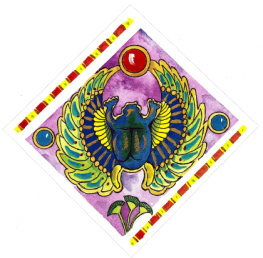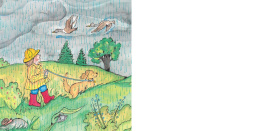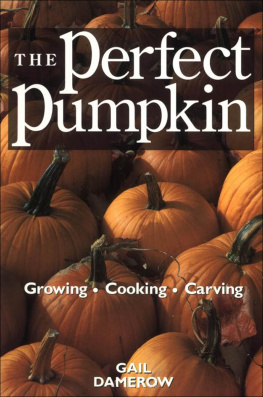HOLIDAY HOUSE is registered in the U.S. Patent and Trademark Office.
FOR JOHN MORALE
Copyright 1999 by Gail Gibbons
All rights reserved
Printed in the United States of America
Library of Congress Cataloging-in-Publication Data
Gibbons, Gail.
The pumpkin book / by Gail Gibbons. 1st ed.
p. cm.
Summary: Describes how pumpkins come in different shapes and
sizes, how they grow, and their traditional uses and cultural
significance. Includes instructions for carving a pumpkin and drying
the seeds.
ISBN 0-8234-1465-5
1. Pumpkin Juvenile literature. [1. Pumpkin.] I. Title.
SB347.G535 1999 98-45267 CIP AC
635'.62dc21
ISBN 0-8234-1636-4 (pbk.)
ISBN-13: 978-0-8234-1465-9 (hardcover)
ISBN-13: 978-0-8234-1636-3 (paperback)
ISBN-10: 0-8234-1465-5 (hardcover)
ISBN-10: 0-8234-1636-4 (paperback)
Special thanks to Bob Welch
of Shearers Greenhouses,
Bradford, Vermont
Pumpkins come in all shapes and sizes.
Pumpkins are members of the squash family. There are many different kinds of pumpkins. Small pumpkins. Big pumpkins. Round pumpkins. Tall pumpkins.
DILLS
ATLANTIC GIANT
JACK BE LITTLE
BABY BEAR
CONNECTICUT
FIELD
LUMINA
Gardeners and farmers call them pumpkin varieties. Some pumpkins have a smooth skin and others have lots of bumps.
RED OCTOBER
BIG MAX
SMALL
SUGAR
PIE
TRICK OR
TREAT
In the springtime, when the suns rays begin to warm the soil, it is planting time. Some gardeners turn the soil to get it ready to plant a small pumpkin patch. A pumpkin patch is where pumpkins are grown.
Some farmers use their plows to slice through and turn over the dirt. The field will eventually be a huge pumpkin patch.
The soil is ready. It is time to plant the pumpkin seeds. The beginning of a pumpkin is curled up inside each pumpkin seed. Food is stored there, too. The seed has a seed coat on the outside to protect it. The bigger the seed, the bigger the variety of pumpkin that will grow.
PUMPKIN SEED
BEGINNING
OF A
PUMPKIN
FOOD
SEED COAT
Sometimes pumpkin seeds are planted in rows. Other times they are planted in small circular areas called hills. Several shallow holes are poked into the hill and one pumpkin seed is dropped into each hole and covered with dirt. Each hill should be about feet (1 m) to feet (2 m) apart to give the plants lots of room to grow.
A pumpkin seed wont sprout until the dirt is warm and water has soaked the seed to soften its coat. Once the seed coat breaks open, a root begins to grow down into the soil. It takes in water and minerals from the soil for food.
ROOT
After about one week, two leaves appear where each pump-kin seed was planted. These smooth leaves are called seed leaves. They begin to make more food for the plant from the sunlight and air.
SEED LEAVES
After a few days, small pumpkin vine leaves appear. These leaves look different. They are prickly and have rough, jagged edges. More new vine leaves grow. Stems begin to grow and twist, crawling along the ground as they become vines.
PUMPKIN VINE LEAVES
VINE
The vines grow thicker and thicker. They grow curly ten-drils that wrap themselves around other parts of the plant to help spread the vines. Gold- colored flowers begin to bloom.
FLOWER
TENDRILS
A pumpkin begins to grow when a grain of pollen from the stamen of a male pumpkin flower lands on the stigma of a female pumpkin flower. This is called pollination. Sometimes pollen moves from flower to flower when the wind blows. Bees and other insects help pollinate, too. Pollen rubs on and off their bodies as they travel from flower to flower in search of nectar.
STAMEN
POLLEN
MALE FLOWER
STIGMA
FEMALE
FLOWER
NECTAR is the sweet
juice flowers make.
The female flower has a small green ball beneath its blossom. When the flower is pollinated, the little ball begins to grow. It is a very, very small pumpkin. Over time it becomes bigger...
SMALL PUMPKIN
and bigger... and bigger. The pumpkins skin begins to turn from green to orange. All of the pumpkins in the pumpkin patch begin to turn orange.
In the fall, when the vines begin to dry up and die, it is har-vest time. It usually takes from to days, depending on the variety, for a seed to grow into a ripened pumpkin. It is ready to pick if it feels hard on the outside and sounds hollow when it is tapped.























